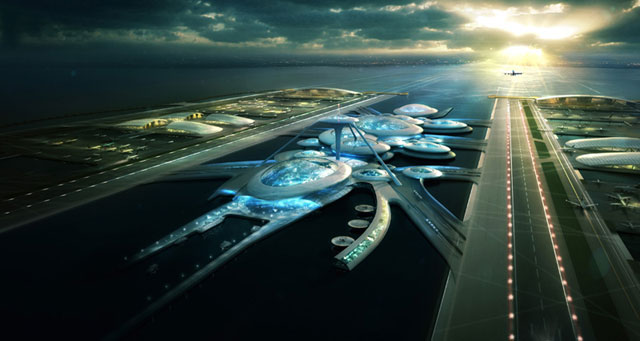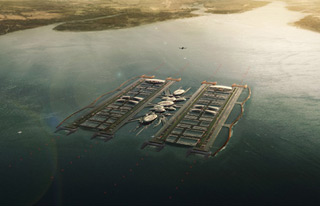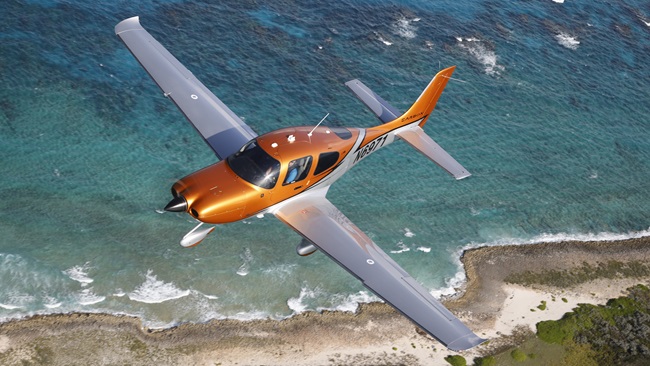
Gensler, an American architectural and design firm, has proposed a floating airport for London with up to six runways. Image courtesy of Gensler.
An American architectural firm has waded into the fray over London’s future airport. Gensler, with a broad portfolio and worldwide offices, envisions replacing Heathrow with a set of floating platforms anchored in the Thames Estuary, connected to runways about 16,000 feet long. It’s not the first design of its kind, but it may get top marks for looks, released to the world this month with a colorful set of renderings that depict a setting worthy of a science fiction classic. Curved domes enclose passenger lounges connected by bridges to runways that can be swapped in and out for maintenance as needed. Passenger terminals would be scattered in three locations around the city, linked by rail and ferries to the departure gates.
Company officials bubbled with enthusiasm, touting the airport design’s flexibility, reduced noise impact, and the fact it would not require demolition of homes. The ability to generate much of its own power with marine turbines was thrown in as an added plug in a press release.
 Gensler’s vision of a floating airport on London’s Thames Estuary is among half a dozen similar proposals, some anchored on shore, and this one not. Image courtesy of Gensler.
Gensler’s vision of a floating airport on London’s Thames Estuary is among half a dozen similar proposals, some anchored on shore, and this one not. Image courtesy of Gensler.
Still, the pitch has drawn a tepid response from some, prompting a planned visit from London’s deputy mayor, part of a campaign to build support for a concept that city officials favor. A commission will choose one of the options by 2015, and expansion of Heathrow, already at capacity, is not viewed as a viable option, due to basic lack of space.
London is not alone in exploring the potential of a floating airport—the idea dates back to the 1930s, pitched in Popular Mechanics as a way to set up pit stops for crossing the Atlantic. Aviation pioneer Louis Blériot pitched “seadromes” shortly before his death in 1936, and more recent efforts included construction of a floating runway in Japan that tested well, but was dismantled. San Diego explored the floating airport option a decade ago, but scuttled the concept because of cost, security concerns, the difficulty of handling fuel at sea, and other factors.



